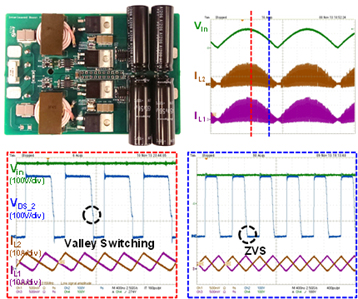LIBRARY
Evaluation of GaN-Based MHz Interleaved CRM PFC Converter

With the advent of the 600V gallium nitride (GaN) high-electron-mobility transistor (HEMT), the converter's switching frequency can be pushed to several MHz. This is a dramatic improve-ment compared to the high-frequency capability of a silicon (Si) based power semiconductor devices. Previous research has demonstrated that the switching loss is the dominant loss in MHz frequency hard-switching conditions, and soft-switching is still critical to achieving high efficiency for the high-voltage GaN HEMT.
Combining the merits of the CRM PFC converter and the high-voltage GaN HEMT, a 1.2kW 1-3MHz GaN-based dual-phase interleaved CRM boost PFC converter is demonstrated to have 97.3% full-load efficiency and 120W/in3 power density. By pushing the frequency above 1 MHz, the benefit for EMI filter design is significant. As the required corner frequency of the EMI filter reaches hundreds of kHz, dramatic size and weight reduction can be projected. Finally, the CRM boost PFC has the limitation that the rectifier conduction loss and non-ZVS switching loss are dominant, especially in the MHz frequency range. The totem-pole bridgeless PFC converter is a promising solution to further improve efficiency by full-line ZVS extension strategy.























































































